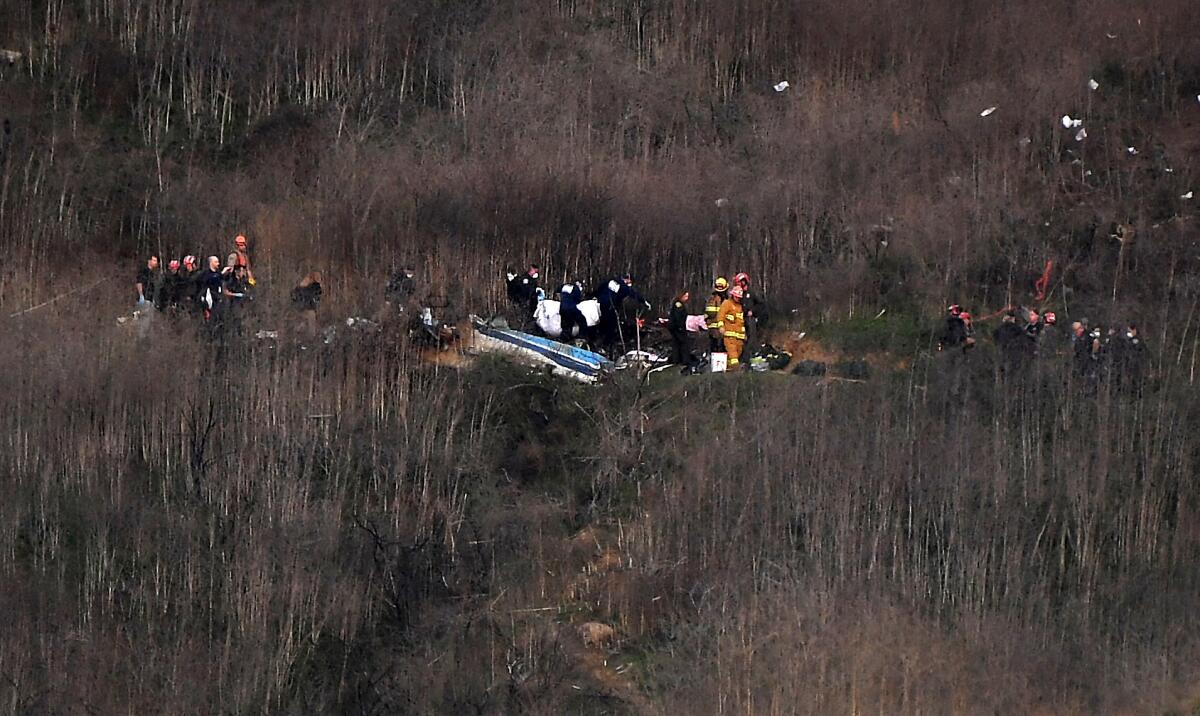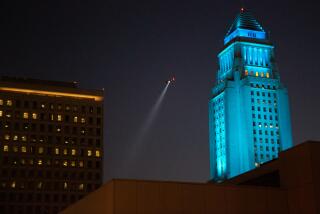Kobe Bryant’s pilot had been disciplined by FAA over weather-related flight violation

- Share via
The pilot of the helicopter that crashed into a Calabasas hillside last month, killing NBA star Kobe Bryant and eight others, violated federal flight rules in 2015 when he flew into busy airspace near Los Angeles International Airport despite being ordered not to by air traffic control, according to records from the Federal Aviation Administration obtained by The Times.
Ara Zobayan was flying northbound in an AS350 chopper when he was denied clearance to traverse the airspace because weather conditions had reduced visibility below what are known as visual flight rules (VFR), according to the enforcement action records obtained through a Freedom of Information Act request.
The FAA said Zobayan took responsibility for the violation and underwent counseling, but the agency faulted him for his lack of preparation. “Had Mr. Zobayan properly planned and reviewed current weather at LAX, he would have been able to anticipate the required action to transit … resulting in proper coordination,” the report says.
Federal authorities are investigating Zobayan’s actions during last month’s flight when he veered out of control after flying into heavy clouds. Zobayan also died in the crash.
On the May 2015 flight, Zobayan was flying for Island Express Helicopters, the same charter company where he worked for years leading up to last month’s crash. It is not clear where Zobayan was traveling that day or whether he had any passengers.
Near Hawthorne Municipal Airport and the 105 Freeway, he contacted a tower at LAX to gain clearance to fly through the airspace. The tower told Zobayan that the airfield was reporting less than three miles of visibility and a cloud ceiling at least 1,000 feet above the ground.
Zobayan, who was relying on his sight to guide him, responded with a request to continue under “special VFR,” which would grant him clearance to fly in weather conditions with less than the minimum visibility for regular visual flying. When the tower denied that request and told him to navigate around the airspace, Zobayan backtracked and said that he could maintain VFR.
During the conversation, Zobayan continued flying northbound and entered the airspace without approval, violating FAA rules, according to the enforcement report.
An FAA investigator, who was not named in the document, did not recommend remedial training and instead opted to counsel Zobayan in several areas including operating in airspace around large airports, special VFR weather minimums, proper planning and reviewing weather.
“There are no indications that this is a repeated incident and there are no signs that this incident is a trend with Mr. Zobayan or any other [Island Express Helicopters] personnel,” the investigator wrote.
Opinions among pilots and experts are split on the severity of the violation.
Shawn Coyle, a longtime helicopter pilot, said the violation is considered relatively minor.
“I don’t know a single pilot out there who hasn’t violated a rule,” he said. “If that’s the only violation he’s ever had then I would say he’s pretty safe.”
The report comes as investigators continue to try to determine the cause of the deadly chopper crash on Jan. 26, a process that will probably take months. However, investigators have said Zobayan was struggling with poor visibility in the moments before the aircraft slammed into the hillside.
Zoey Tur, a veteran Los Angeles news chopper pilot, noted that both the Hawthorne incident and the crash involved the pilot struggling with poor weather conditions.
“As a pilot you’re supposed to check the weather conditions along the route of flight,” Tur said.
A representative for Island Express Helicopters could not be reached for comment. An attorney representing the company did not respond to a phone call from a reporter Friday.
Kurt Deetz, a former pilot for Island Express Helicopters, said navigating around the controlled airspace near LAX would have added only five to 10 minutes to the flight.
He contends the pilot also should have known that LAX rarely allows helicopters to fly under special flight rules in the airspace around the airport. Entering the airspace without approval, he added, can be dangerous because of potential conflicts with commercial jets.
“You can’t request special VFR and then they deny you and you say, ‘Oh wait a minute, actually I’m VFR,’” he said. “That’s not how it works. It shows that perhaps his understanding of special VFR as opposed to VFR was cloudy.”
Zobayan reported the incident to his employer and the FAA. Island Express Helicopters told federal investigators that they conducted additional ground and flight training with Zobayan in response to the situation.
Helicopter pilots and aviation experts say less-than-ideal weather is not uncommon for experienced pilots, but flying when visibility is decreasing poses an extreme danger.
Times staff writers Richard Winton and Kim Christensen contributed to this report.
More to Read
Sign up for Essential California
The most important California stories and recommendations in your inbox every morning.
You may occasionally receive promotional content from the Los Angeles Times.











